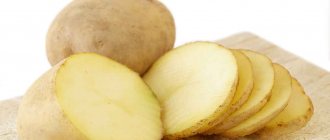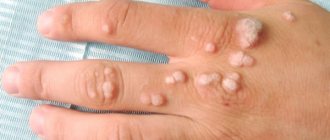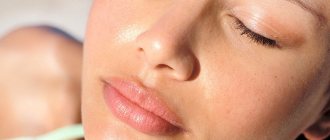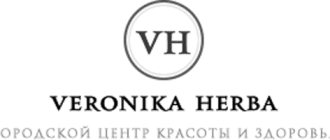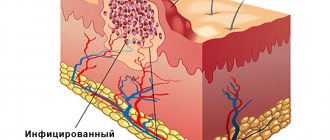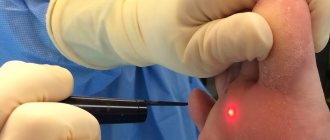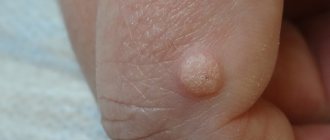What are the most common warts?
Most often (up to 70% of all cases), patients report warts that bother them, and the majority of patients are school-age children. Warts are also found in 20% of students. Plantar warts are more common in adults (34% of cases), as opposed to flat warts, which are again more common in children (4% of all warts).
An experienced dermatologist can easily determine the type of wart during a consultation. However, in rare cases, especially if the wart is injured, it is difficult to diagnose it only by examination, and then the doctor can perform a biopsy of the derivative and histological examination.
"Lekker Superclean": consumer reviews
This is a fairly popular remedy. It received consumer recognition due to its ease of use. In addition, the drug is inexpensive - approximately 100-120 rubles. The product also owes its positive reviews to its high efficiency. It has helped many people get rid of papillomas and warts. They note that small formations fall off after 1-2 days. If the wart is larger in size, it has to be processed again. Sometimes it takes 3-5 days.
The Lekker Superchistoto felt-tip pen was not spared negative reviews. Some people did not like this treatment because they felt a burning sensation after applying the product. Especially if you treat papillomas on the neck or arms. Many note that the drug only affects the external manifestations of the disease, without destroying the virus itself. Therefore, papilloma may appear again in the same place.
Can warts cause complications?
Warts usually do not cause complications unless they grow, become painful when walking, and cause psychological discomfort for aesthetic reasons. In rare cases, injuries can spread to adjacent areas.
Patients with a significant defect in the immune system (for example, immunodeficiency of various origins) retain the theoretical possibility of malignant formation of a simple wart, although this does not occur in everyday practice. This is in contrast to genital warts, which can also be caused by oncogenic types of human papillomavirus (HPV). Thus, to avoid the complications listed above, radical removal of warts is recommended in all cases.
Description
"Lekker Superclean" is a product in the form of a felt-tip pen. It is intended to use the medicine only on the affected tissue. A small spout allows you to apply the drug pointwise to a wart or papilloma. Otherwise, its aggressive components may get into healthy areas. But thanks to this form of release, the drug does not have any harmful effects.
Lekker Superclean has a simple composition: sodium or potassium hydroxide diluted with distilled water. Thanks to this, all skin defects are eliminated without a trace in just a few applications. The drug is effective against warts and dry calluses. It softens dead skin areas and makes them easier to remove. In addition, the drug is effective against the papilloma virus.
Wart removal
Although scientific literature suggests that with a good immune system, warts can disappear on their own within a few years, medical practice shows the opposite. The main problem with treating warts is that there is currently no method or medicine to remove the virus itself, so a doctor cannot guarantee a 100% cure. All treatment is aimed at removing the wart itself, but does not prevent HPV recurrence.
Basic ways to remove warts:
- Laser;
- Cryodestruction with liquid nitrogen;
- Medicines;
- Removing warts surgically.
Ideally, wart removal should be carried out by an experienced dermatologist, since incorrectly prescribed treatment may not only not help, but also worsen the situation. Warts are treated only by radical removal, which, as already mentioned, can be carried out with a surgical laser, liquid nitrogen or special drugs.
Our center uses any of the above methods for removing warts. In each case, the treatment method is selected individually.
Instructions for use
Lekker Superclean is a rather aggressive drug. If used incorrectly, you may get burned. Therefore, it should not be used on the face and mucous membranes. This remedy is also contraindicated in case of individual intolerance to the components included in the composition.
When treating, you need to make sure that the product does not come into contact with delicate and sensitive skin. For the same reason, the drug is applied pointwise to a wart or papilloma. Therefore, the shape of the felt-tip pen makes it easier to use the drug.
How to properly use “Super Clean” to quickly get rid of warts or papillomas?
- Before applying the medicine, it is recommended to steam the wart and dry the skin.
- Shake the felt-tip pen and turn the tip down.
- Carefully, without touching healthy skin, apply the medicine to the wart. The area around it can be lubricated with regular cream.
- Apply the product to the formation until the area darkens.
- It is recommended to use the drug once a day.
- Due to the high aggressiveness of the active substances, the course of treatment should be continued for no more than 5 days.
After application, “Super Clean” does not need to be rinsed off. It is better to wait until the product is absorbed. After this, you can go about your normal activities.
Laser wart removal
The procedure is performed under local anesthesia after the doctor has administered painkillers. Depending on the size of the derivative, laser removal of warts takes up to 15 minutes. After the procedure, a bandage is applied and medications are prescribed to lubricate the wound as it heals.
Laser wart removal
The main advantage of laser wart removal is that just one procedure is enough to make the wart that bothers you disappear forever. In addition, this treatment method is the most common among patients and has the best reviews, since laser warts are removed from:
- faces;
- palms and feet;
- genitals.
What do they really look like?
Very often, patients who come to see me ask to remove a papilloma or several of them and indicate a pigmented nevus, fibropapilloma or wart. Once I was offered a tick to remove a papilloma (I’m not kidding):
I consider it necessary to clearly define what papilloma is and how it differs from other skin neoplasms. Most often this is a small, 1-3 mm skin formation on a thin stalk. There are three main differences between papilloma and other skin formations. First, the leg is always thinner than the top. Secondly, the consistency of papilloma is always softer than the surrounding skin. Third, the size of the papilloma is usually small - no more than 5 mm. The photo below shows a typical papilloma.
Removing warts with nitrogen
This is an alternative to laser wart removal. The method is also quite popular, but usually requires several procedures, they are quite painful, and after cryodestruction with liquid nitrogen a painful bubble forms. Therefore, removal of condylomas with liquid nitrogen is recommended only for older children and adults.
Removing warts with nitrogen
Cryodestruction is repeated every 2-3 weeks until the final disappearance of condylomas. Usually 6 sessions of liquid nitrogen treatment are sufficient, but if the wart still persists, other treatment options are considered. In addition, destruction with liquid nitrogen is not suitable in cases where the wart affects the area of the fingers and thighs.
Diagnosis: which doctor to contact
The examination is prescribed by a dermatovenerologist after a visual examination in a number of cases:
- the presence of papillomas on the skin or mucous membranes (or their presence in a sexual partner);
- pregnancy planning;
- infertility or unsuccessful pregnancies in the past.
The very fact of detecting a virus is not decisive - it is much more important to identify its type and degree of oncogenicity.
The following methods are used for diagnosis:
- colposcopic examination - examination using a special microscope of the cervix and vagina;
- cytological examination - taking a smear, has low accuracy; if the result is poor, additional analysis is carried out;
- histological examination of a biopsy specimen - sampling of a small fragment of tissue for analysis;
- PCR (polymerase chain reaction) - the material for the study is a smear, urine or blood, the accuracy is close to 100%.
PCR is most often used in specialized clinics. The accuracy of the result depends on compliance with the research technique. Such analysis is best done in laboratories with strict compliance with standards.
Removing warts with medication
Destroying acids such as salicylic acid, trichloroacetic acid, urea and other special medicines are also wart removers. Any pharmacy offers a fairly wide selection of such drugs.
Salicylic acid, urea softens the top layer of the wart, in addition, stimulates the local immune response, and hence the disappearance of the wart. But when choosing to treat warts with medications, you need to be patient, because even if you use the product in strict accordance with the instructions, the effect becomes noticeable only after a few months.
Removing warts with medication
In addition, constant use of the drug is required according to a special scheme in compliance with certain skin care rules. Sometimes it causes discomfort to the patient and also the medicine has side effects such as skin irritation, redness, etc.
Therefore, many patients make a better decision - see a dermatologist and remove warts in faster and safer ways.
Wart - symptoms and treatment
When to see a doctor
Patients with warts often turn to the doctor to eliminate an aesthetic defect.
Some types of warts cause pain when walking or crack, in which case it is better to remove them. There are several ways to treat warts. All of them are usually carried out under the supervision of a doctor, and some of them are carried out only in the clinic’s treatment room.
Chemical treatments
To get rid of warts, applications of milk-salicylic collodion and salicylic patches are used. The percentage of drugs and the method of their use (long-term wearing of patches, applications, etc.) depend on the prevalence and localization of the tumor.
Solutions of zinc and 2-chloropropionic acid can also be used. In this case, a chemical composition is applied to the pre-treated surface, which is left on the wart until the color changes (depending on the type of wart). The procedure is repeated several times after 7, 14 and 21 days. Before each procedure, tissue is removed mechanically.
Another chemical method is a combination of nitric, acetic, oxalic, lactic acids and copper nitrate trihydrate. Only relatively small tumors - up to 5 mm - are treated in this way. The solution is also left until the wart changes color. After 3-5 days, the patient comes for a follow-up appointment; if necessary, he is prescribed a repeat procedure after 1-4 weeks [5].
Cryodestruction
This method involves freezing the wart using liquid nitrogen: a moistened swab is pressed against the damaged skin (covering several mm of surrounding tissue) for 1-5 minutes. The destruction of some tumors requires several procedures with an interval of four weeks.
The main disadvantages of cryodestruction are its pain and delayed effect compared to other methods, in which only one procedure is often sufficient for removal.
Electrocoagulation
Under the influence of electric current, the wart is removed in layers. This operation is performed under local anesthetic [6].
This method is more effective than cryodestruction, but it has a significant disadvantage: electrocoagulation often leaves behind scars at the site of wart removal. For those patients who come to eliminate a cosmetic defect, this method will not be the most suitable.
Laser destruction
Warts are also removed in layers using a laser. The light guide contacts the skin from several seconds to three minutes, depending on the size. Then the resulting scab is excised, and the bottom of the wound is treated with a laser again. The patient is then instructed on how to treat the wound. The operation itself is performed under local anesthesia.
Radio wave surgery
Radio wave surgery is one of the most modern and gentle methods for removing some benign tumors, including warts. For this treatment, the devices Surgitron (USA), PBX oscillator (Russia), Vesalius (Italy), etc. are used.
The method is based on the generation of electromagnetic waves with different frequencies: from 100 kHz to 105 MHz [7]. When the wave passes through the tissue, During the procedure, the tissue resists the passing waves, causing molecular energy to be released in the cells, which heats the skin. When exposed to heat, the cells actually evaporate, creating a neat cut. In this case, no mechanical forces are applied to the affected tissue.
The advantages of this method:
- safety;
- rapid wound healing;
- good cosmetic effect - scars and cicatrices are excluded;
- relative painlessness - a local anesthetic is used before the mini-operation;
- exclusion of secondary infection due to automatic disinfection of the electrode when the device is turned on.
The effectiveness of this method is recognized all over the world, but it is quite difficult to find a clinic that uses the method of radio wave surgery.
Preparations for the treatment of warts
There are no antiviral drugs for the treatment of HPV yet, so it is impossible to get rid of warts with the help of pills. They can only be removed by chemical and physical methods.
Which treatment method to choose
All of the above methods have several disadvantages:
- In the first couple of weeks, the operated area has an unattractive appearance - crusts, darkening of the tissues. This must be taken into account if the warts are on visible parts of the body (for example, on the face).
- Unpleasant odor and some degree of pain during surgery.
In addition, each of these methods has contraindications, which you should learn about at a preliminary consultation with a dermatologist.
But the main disadvantage is the high probability of relapses, especially if the warts were widespread and extensive. With each of these methods, doctors fight not the root cause of the disease, but its consequences, since today the human papillomavirus cannot be cured.
Therefore, therapy is aimed at:
- or to destroy tumors that arise at the site of virus introduction;
- or to stimulate an antiviral immune response;
- or a combination of these approaches [8].
Most often, destructive methods of treatment are used. Their efficiency reaches 50-80% [4].
For surgical treatment methods, childhood is usually not a contraindication. Therefore, many of these methods (including radio wave surgery) are also used to treat warts in children. An exception is the chemical removal of warts due to the possibility of adverse reactions to the substance.
What to do after surgery
After any of these surgeries, be sure to follow your doctor's recommendations.
After removing a tumor using any of the presented methods, the doctor usually prescribes treatment of the removal site. It is forbidden to remove the “crusts” yourself, wet the wound or expose it to direct sunlight.
If a patient constantly develops new warts, then he should consult an immunologist - he may need to take medications that will increase the body's resistance to the human papillomavirus.
Myths and dangerous misconceptions in the treatment of warts
Warts are usually harmless and often disappear on their own over time. This property explains numerous myths about healing using spells and other unconventional methods.
Treatment of warts with home remedies is unacceptable, since the patient will not be able to accurately distinguish a wart from other diseases without the necessary equipment, and complications after such “treatment” occur much more often than recovery.
Only a doctor can select a treatment method after examination and an accurate diagnosis.

